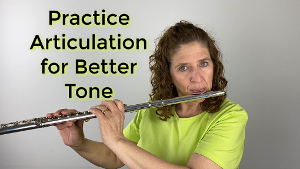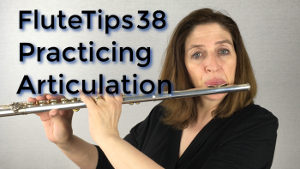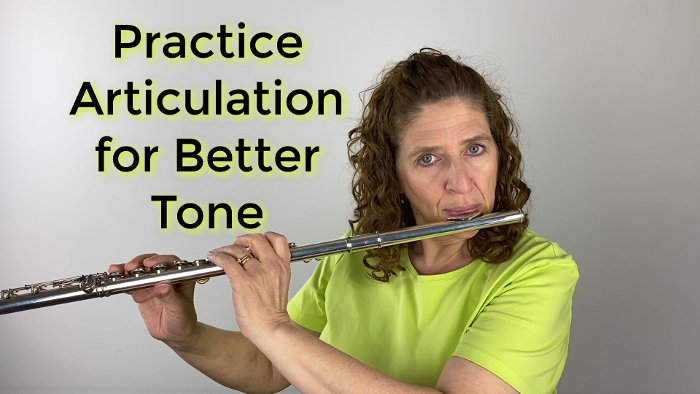We often think that getting a better tone is all about practicing long tones or flexibility exercises or practicing De la Sonorité or any tone book. Those will help. Don’t get me wrong! You need to practice those books as well. But sometimes there are other exercises you can do that help a different aspect of your tone, or help you approach your tone in a different way. One of the ways I like to do it is through articulation practice.
Exercise Your Tongue
It is good to practice with lots of different articulations anyway, because your tongue is a muscle and practicing articulations lets you use that muscle. When you need to tongue really fast or double tongue really fast, or even single tongue quickly, your tongue is right there and ready to go. If you practice that muscle, you will approach those more difficult articulations much better.
Short Staccato Articulations
However, let’s just talk about practicing articulations and especially, and more specifically, really short staccato articulations to help you get a better tone. Now when we articulate, what I think helps best is to be thinking about how you are putting your tongue on the roof of your mouth and how that can help center the tone immediately. When we practice articulation specifically for tone, it’s all about packing a punch. When you put that “ta” on the note, that tone is right there. It is not spread. It is not delayed. It is right there. And that is what you are concentrating on.
Seven Daily Exercises
One of the exercises I like to do that is on Reichert’s Seven Daily Exercises, number two. You can really turn anything into this exercise, but this is one where I like to do it. In this exercise Reichert alternates between I and V arpeggios. The important thing is to tongue very short and make the tone respond immediately.
Cantabile et Presto
I like to have my students practice articulation in the solo Cantabile et Presto by Enesco. There are several really fast low register tonguing sections in the Presto section. I especially like practicing articulations in the low register because I have to hold the air in and not let it out and to make sure that I get the tone immediately.
Lost Low Register
Now I remember finding a long time ago when I first learned this solo, that the tone wouldn’t come out on the 16th note low C’s. It was just big puffs of air until I got up into the middle register. I would completely lose the whole low register. I would practice it with the double tongue, and my fingers and tongue could move that fast. But I had not yet learned what it takes to get a low C to come out and have tone on it in a really short period of time.
Hold in Your Air
I can work on that problem in my low register tone by working on these very short articulated notes. When I practice this exercise using either the Presto or the Reichert, I will think about getting a really good tone by holding in my air and not blowing very much. I want to let my tongue do its work, and it will come out better. Sometimes when I am working this way, I will hold in so much air that I have to let air out in order to take a good breath. When my tone starts feeling and sounding very centered and resonant then I can begin working it a little bit faster. But if you’re having trouble, just go one note at a time.
Upper Register Too
Now I have been talking a lot about the low register, but our upper register needs this articulation practice as well. I want to make sure that each note is an absolute gem of a sound as I play. I will articulate with amazing support and strive to get the most fantastic tone possible.
That’s how I would work on articulating for a better tone. It is a really good method for tone practice and can offer amazing results. Articulations pack a wonderful punch!
So, work on that, see what happens and let me know down in the comments.
Have fun!
DoctorFlute
Watch me demonstrate this idea:
Practice Articulation to Improve Your Tone – FluteTips 155

Let’s Talk Articulation – Focus on Your Tah – FluteTips 179

FluteTips 38 Practicing Articulation

Experimenting with Tone – FluteTips 176

Getting a Better Tone Quality on Your Middle Notes C C# D Eb – FluteTips 161

Finding Your Tone with a New Headjoint – FluteTips 158


Great tips !!! Thank you 😊
Thanks so much Isa! Let me know what you are struggling with.